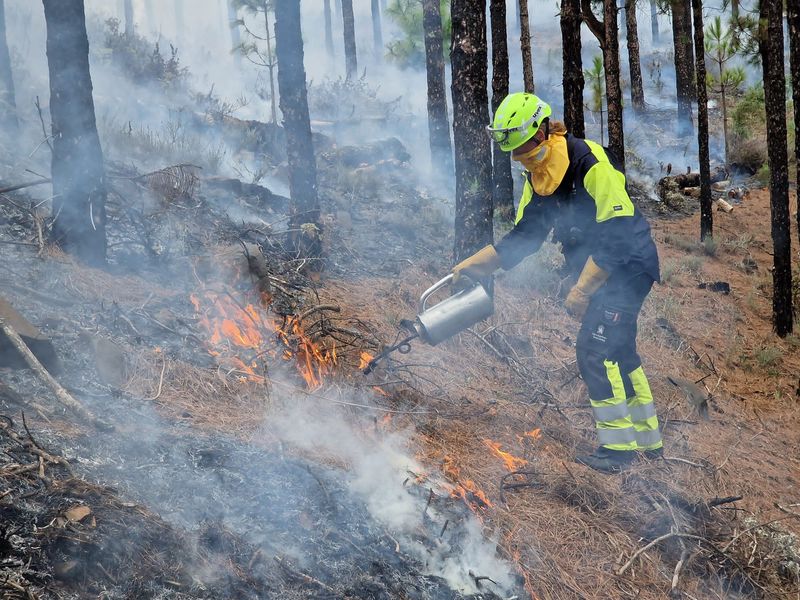The European Horizon 2020-funded SAFERS project (Structured Approaches for Forest fire Emergencies in Resilient Societies) finished in March. During three and half years, it has aimed to increase the resilience of societies by improving decision-making in wildfire management, through a tool that integrates intelligent services.
“SAFERS has created a decision-support tool that improves the situational awareness of those who need to make decisions during the wildfire risk management cycle, leading to more efficient management and, therefore, protecting the people and properties that are in the path of wildfires”, explains David Martín, from the Pau Costa Foundation (PCF).

14 partner institutions from seven European countries have been part of the SAFERS consortium, and the LINKS Foundation has coordinated the project. PCF has led the co-design approach SAFERS has followed to create the tool with the involvement of key actors.
“During the first stage of the project, and with the support of the LINKS Foundation, we oversaw the collection of requirements from potential end users (emergency and land managers, fire planners, and citizens) for the development of the tool. Then, towards the end SAFERS, we organised a pilot in El Perelló, Catalonia, to test the tool”, states David.
Cabrafeixet (the Perelló ADF, from Agrupació de Defensa Forestal, Forest Defence Group) and Enervent S.L. supported the Foundation to coordinate the pilot above. A range of actors participated in it, including Catalan public authorities, firefighters, civil protection staff and students, forest volunteers, and the police. Three more pilots took place in Italy, France, and Greece.
“The pilots were the scenarios that demonstrated the functionality of the SAFERS tool”, adds David.

This tool consists of a chatbot and a platform with different services generated by AI from, among others, satellite and crowd-sourced data. Some of those services are early warnings, impact assessment estimations and habitat recovery maps. They can be used independently and are at the disposal of emergency decision-makers to improve situational awareness. As for the chatbot, it has been designed for citizens and practitioners working in the field to feed it with their observations in the form of messages, pictures, videos and audio.
“What firefighters and citizens send via the chatbot is geolocated. The AI processes this information and makes it reach the decision-makers using the platform. In the case of an incident, this enables them to know where exactly it is happening”, clarifies David.
The SAFERS tool will remain functional for one year after the project. The different services are available on the SAFERS website, and any person interested in any of them should contact the project coordinator.
Participating in SAFERS has allowed the Foundation to interact with other fire-related European projects at multiple activities. This is an opportunity to grow and strengthen our network and nurture the project with the knowledge exchanged with colleagues. Finally, like the past projects HEIMDALL and IOPES, or the currently running MedEWsa project, SAFERS has made us connect to the most innovative tools in the field of wildfire emergency management and bring those innovations closer to the wildfire community.






